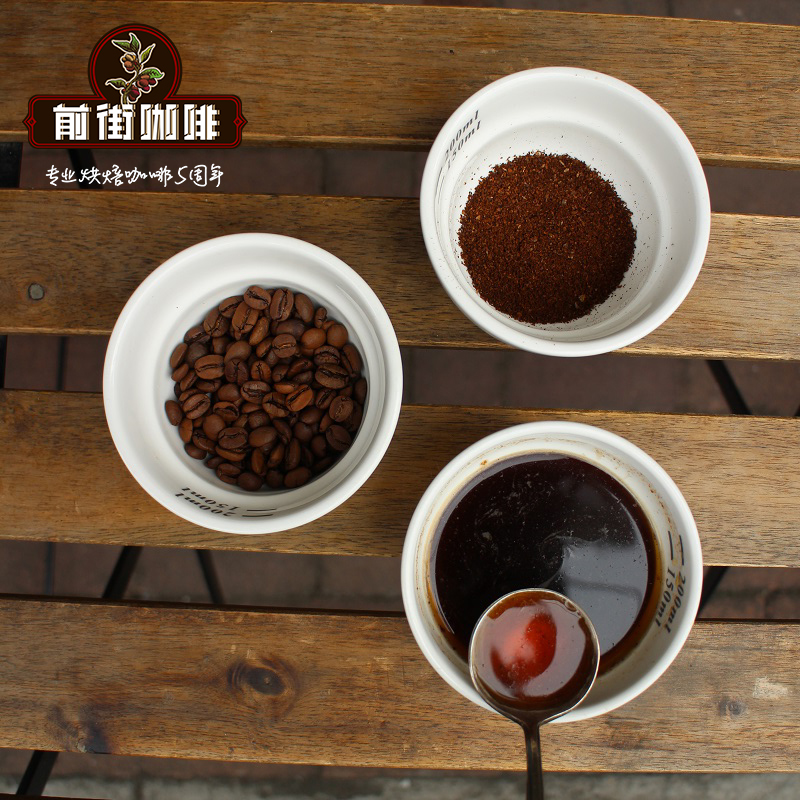The Ethiopian Coffee Guide gives you a 5-minute understanding of the origin of coffee

Ethiopia is recognized as the birthplace of coffee and is highly respected in the specialty coffee industry. Coffee beans from this country are the staple food on the menu of coffee shops around the world.
But why is Ethiopian coffee so well received? How much do you really know about this origin?
Coffee-producing areas in Ethiopia vary widely, with cup contours vary widely from region to region, micro-region and even from farm to farm. However, many special Arabica coffee will make you ask for more. Keep reading to learn about the birthplace of coffee.
Ethiopia is recognized as the birthplace of coffee and is highly respected in the specialty coffee industry. Coffee beans from this country are the staple food on the menu of coffee shops around the world.
But why is Ethiopian coffee so well received? How much do you really know about this origin?
Coffee-producing areas in Ethiopia vary widely, with cup contours vary widely from region to region, micro-region and even from farm to farm. However, many special Arabica coffee will make you ask for more. Keep reading to learn about the birthplace of coffee.
The coffee ceremony is a tradition with a long history and should not be rushed. Roast the mung beans in a pot with hot coal, mash them with a pestle and mortar, and then brew them in a traditional pot with a narrow mouth. Coffee is drunk from a small cup without a handle-another detail, there is no choice but to drink slowly and patiently.
Paul Paul Arnephy is the co-founder and chief roaster of Caf é Lomi in Paris, where he often bakes Ethiopian coffee. "Ethiopians have a unique relationship with coffee," he said. If someone offers you coffee at home in France, they will probably put it in a capsule and serve you in 17 seconds. Serving coffee in Ethiopia requires 45 minutes of planning. I like it. "
Production methods of Ethiopian Coffee
Ethiopian coffee is usually produced in a sustainable manner, mostly in the form of garden coffee. This means that it is planted by farmers near the house, usually intercropping with other plants. It is also common for producers to grow coffee in semi-forest systems, where natural forests adjust shadows by pruning weeds and bushes and introduce coffee seedlings. It is estimated that only 5% of coffee production comes from dedicated plantations in Ethiopia.
Getahun Gebrekidan is the coffee and tea product manager of Fairtrade Africa in East and Central Africa. "there are growers (contract farmers), plantations and smallholder coffee producers in Ethiopia," he said. Coffee producers' groups of smallholder farmers in Ethiopia are organized in accordance with the principles of cooperatives. They are voluntary and open to all farmers.
"any small farmer who is willing to join the cooperative society and is able to assume the responsibility of membership can join on the basis of non-discrimination against gender, social status, race, disability, religion, etc. Cooperatives are democratic organizations run by their members who actively participate in policy-making and decision-making; each member has an equal right to vote. "
Coffee cooperatives "support and encourage their individual coffee farmers to adopt good agricultural practices, collect red cherries, process coffee cherries in washing or dry processing, and, if they have the ability to export, export coffee and distribute dividends to their individual farmer members," Getahon said.
He told me that two or more primary cooperatives could form trade unions, which supported the harvesting and processing of each primary cooperative in the Ethiopian coffee supply chain and "carried out secondary processing including shelling, sorting, polishing and packaging and exporting coffee" and apportioned to their respective cooperatives. "
It is an effective hierarchical system that focuses on sound, consistent monitoring and compliance with strict international quality standards, which is essential for professional coffee buyers.
Coffee processing options in Ethiopia
It is common to wash and naturally treat Ethiopia. Getahon told me that in natural processing, "farmers put coffee cherries on a flat surface and dry them in the sun." This process usually takes two to six weeks, then tilt and rotate the beans to dry evenly. When the seed is dry, take it out of the cherry. "
"the coffee washed by the original Ethiopians exudes elegance," Paul said. It has a delicate taste at the end of floral and citrus, and has a silky body. However, the flavor characteristics are seriously regional.
"Natural foods tend to have a rich, round fruit flavor with a deeper depth. Compared with similar products after washing, better naturally processed coffee maintains the freshness of lemon color and floral aroma, and adds sweetness and body feel. When you find one of them, the magic is not too far away. I think there is more and more honey-processed coffee in Ethiopia. I think this is because the producers can sell directly to the market, and the results are incredible. "
Ethiopian coffee area and its flavor
Because Ethiopia has obvious changes in topography and altitude, and has a variety of varieties and unclassified plants (called heirlooms), the flavor of its coffee varies greatly. This lack of specificity for varieties means that professional buyers distinguish Ethiopian coffee by region, altitude and cup-shaped scores rather than varieties.
Here are the main coffee producing areas and related flavors in Ethiopia.
Sidamo
Sidamo is a large area of land on the fertile plateau of the Rift Valley and is one of three trademark coffee areas in Ethiopia (as well as Harrar and Yirgacheffe). The rainfall ranges from 1550 to 2200 Masra, with abundant rainfall, suitable temperature and fertile soil.
It is reported that about 60% of the coffee produced here is washed. Sidamo coffee is famous for its rich, full, vibrant crisp acidity and floral and citrus aromas.
Yejia Xuefei
Yirgacheffe is part of the Sidamo region, but because of its outstanding coffee, it is subdivided into its own trademark micro-area. Although some natural coffee is also produced, most of the coffee produced here is washed.
The Yergachev Coffee Farmers' Cooperative Union (YCFCU) has 28 major cooperative members, representing more than 45000 member farmers in the region. Andualem Shiferaw, deputy manager of YCFCU, said: "the general YCFCU coffee is characterized by bright, medium-bodied coffee, with obvious floral aromas, strong and complex flavors, floral aromas, moderate to full-bodied acidity, flavor-full aftertaste and a long finish.
"characteristics may range from lowlands to highlands; for example, in Chichu and Michle cooperatives, coffee produced in areas of 1600 to 1800 maltine above sea level has an herbaceous aroma. However, coffee from Idido,Adadao and Aramo cooperatives (produced at elevations of 2000 to 2400 massl) may give off a floral scent. "
Harald
This is a wild Arabica coffee that grows on a small farm in Oromia (formerly Harald) at an altitude of 1400 to 2000 meters. It is usually processed naturally.
Harald is famous for its strong flavor and fruity acidity. It is described as full-bodied and spicy with a strong blueberry or BlackBerry flavor. It is usually full-bodied and is compared to dry red wine. Its strength means that it is most commonly used in espresso mixtures rather than single sources.
Sharp wood
Limu coffee grows in southwestern Ethiopia, between 1100 and 1900 Masr. Low acidity washed coffee has a balanced body and unique spicy flavor, pleasant sweetness and often floral aroma.
Gemma.
This area of southwestern Ethiopia is a large producer of commercial-grade coffee. It grows at an altitude of 1400 to 2100 Masra, also known as Djimmah, and the coffee in this area is reported to have the best washing effect and, if processed naturally, has a medicinal flavor.
Paul said: "We have honey processed coffee provided by Gima, which is my favorite at the moment." It has some yellow plum and apricot fruit, some tropical mango, and some sweet orange. Bright citric acid and a silky body mix the coffee together. The end is clean and satisfactory. I kind of like it on espresso. "
Challenges to coffee production in Ethiopia
Climate change poses a serious threat to coffee production in Ethiopia especially because of the increasing incidence and duration of droughts. The new weather conditions are seriously damaging agriculture, which depends on 85% of the country's population.
"without significant interventions or major influencing factors, 59% of the current growing areas may experience climate change enough to make them unsuitable for coffee cultivation," said a report published in the journal Nature in 2017. "
Getahun told me that the industry also faces the following challenges: low fair trade market penetration, poor application of good agricultural practices, inadequate income diversification, high production costs and lack of market information.
"unsustainable consumption is challenging farmers to pay the cost of sustainable production," he said. We can see that current market participants are offering less than $1 per pound for ethical coffee. Therefore, this will prevent buyers and importers from making ethical purchases. The fair trade system works actively with civil society to raise consumer awareness of sustainability and ethical consumption. "
Andualem told me, "the turmoil in the coffee market and other policy issues are affecting joint ventures, and YCFCU is looking for a way to overcome these problems." This includes installing roasters and grinders to allow producers to bake and grind their own coffee. "the new value-added project is mainly to provide barbecue and ground products to those corners of the world where our green products have not been resolved," he said. "
Traceability and transparency
Cooperative unions and plantation coffee owners can export their coffee directly to international buyers, but private exporters usually buy coffee through the Ethiopian Commodity Exchange (ECX) and then export their coffee to international buyers. The basic function of ECX is to provide a centralized, standardized body in which to buy and sell agricultural products and futures.
All coffee entering the ECX has a grade and geographical name. But Andualem told me that this only means regions or microregions, and it is difficult to trace products to their specific origin through this system. This is not ideal for special coffee markets that attach importance to traceability.
"the professional market is about traceable products with stable production and quality," Andualem said. The market needs unique cup-shaped products that have been consistent for many years. Without traceability, we cannot say that a particular product can only be sold in a particular market. "
If you want to buy traceable premium coffee from Ethiopia, "use any supply chain option to purchase ethical coffee directly from producers and at least meet the cost of sustainable production," Getahun said. Purchasing directly from farmers ensures traceability and sustainable quality of coffee and reduces costs by cutting off participants in rogue trade supply chains. Bakers need to work with coffee growers to combat unsustainable consumption and contribute to the sustainable production of coffee. "
Ethiopia is a major coffee producer, consumer and exporter. The quality and diversity of coffee is undeniable, if you want to buy some high-quality coffee, this is a good birthplace.
"all aspects of Ethiopian coffee are fascinating in terms of flavor, production history, future potential and potential risks," Paul said. "
By choosing to buy directly from producers or cooperatives, you can increase your chances of getting coffee that is not only unique and delicious, but also traceable to its origin.
Important Notice :
前街咖啡 FrontStreet Coffee has moved to new addredd:
FrontStreet Coffee Address: 315,Donghua East Road,GuangZhou
Tel:020 38364473
- Prev

The higher the altitude, the better the quality of coffee beans? what factors determine the hardness of coffee beans?
Pick up any bag of hand-baked specialty coffee and look at the label. You will notice that it tells you some information: the country and region of origin, the taste instructions for coffee beans, perhaps the name of the farm or roaster and, if it is a single origin, it will usually tell you its name. Altitude, measured in meters above sea level (masl). But it's practical.
- Next

Why does the coffee have a bitter taste? how to avoid extracting too much caffeine?
Caffeine belongs to plant alkaloid, unscented and slightly bitter, but it is not the main source of bitterness. generally speaking, the content of caffeine is absolutely related to the variety of coffee. in addition, many people think that caffeine is the cause of heart palpitations when drinking coffee. in fact, it may be caused by coffee is not fresh, or the harmful substances of defective beans are caused by the adverse effects of caffeine.
Related
- Beginners will see the "Coffee pull flower" guide!
- What is the difference between ice blog purified milk and ordinary milk coffee?
- Why is the Philippines the largest producer of crops in Liberia?
- For coffee extraction, should the fine powder be retained?
- How does extracted espresso fill pressed powder? How much strength does it take to press the powder?
- How to make jasmine cold extract coffee? Is the jasmine + latte good?
- Will this little toy really make the coffee taste better? How does Lily Drip affect coffee extraction?
- Will the action of slapping the filter cup also affect coffee extraction?
- What's the difference between powder-to-water ratio and powder-to-liquid ratio?
- What is the Ethiopian local species? What does it have to do with Heirloom native species?

